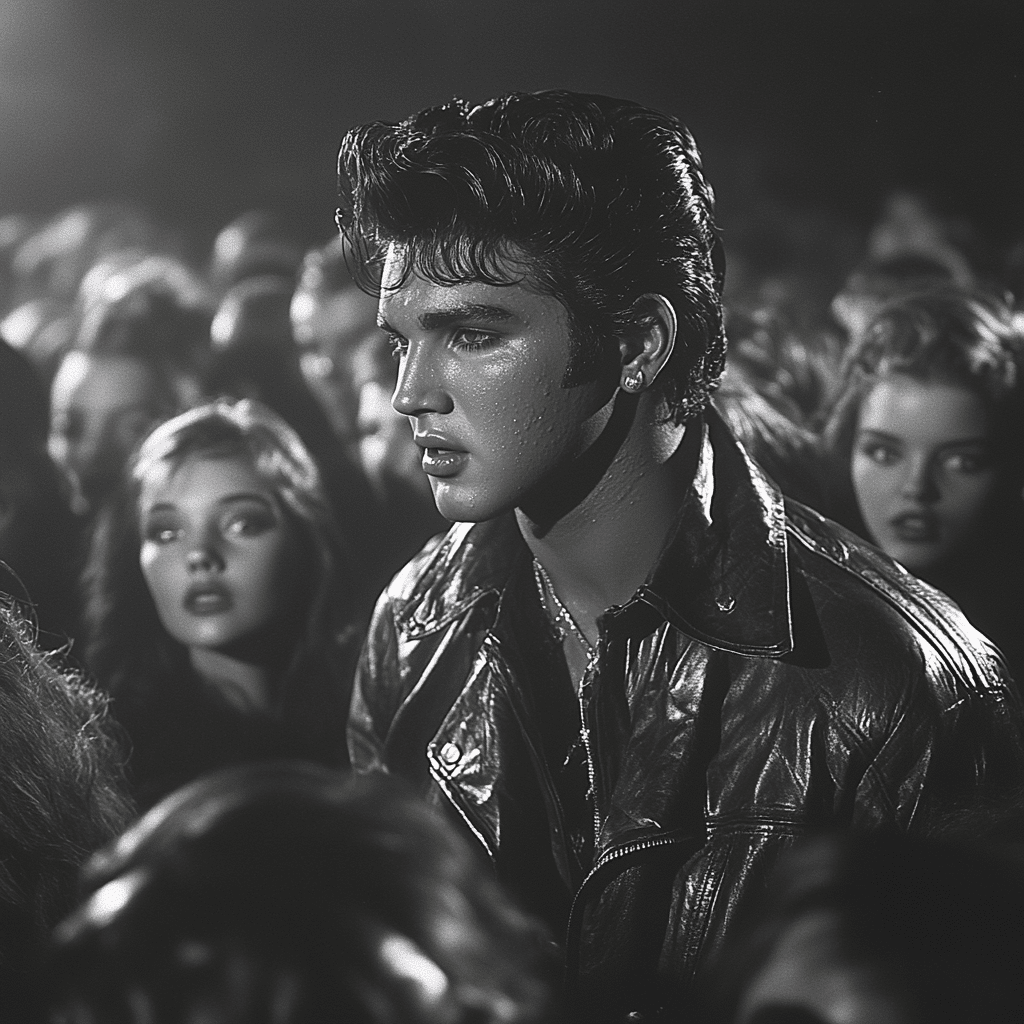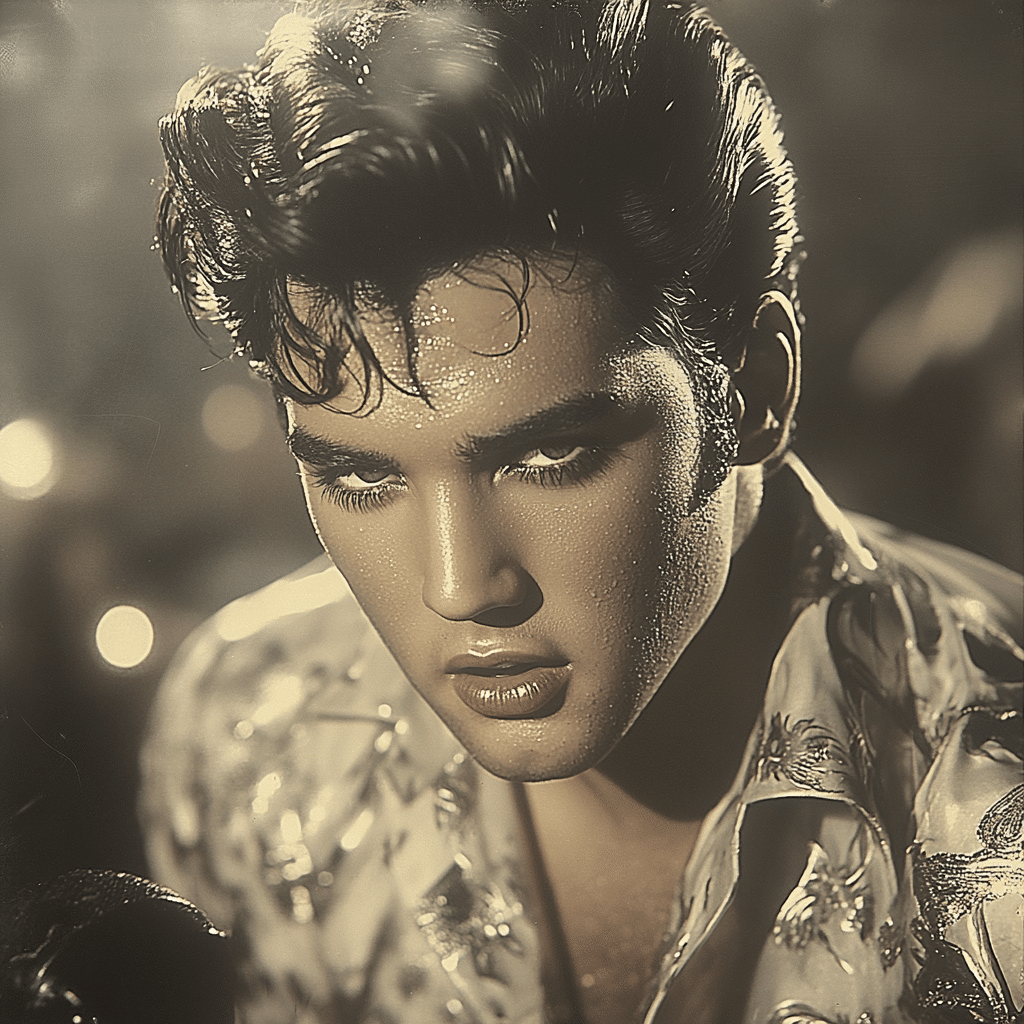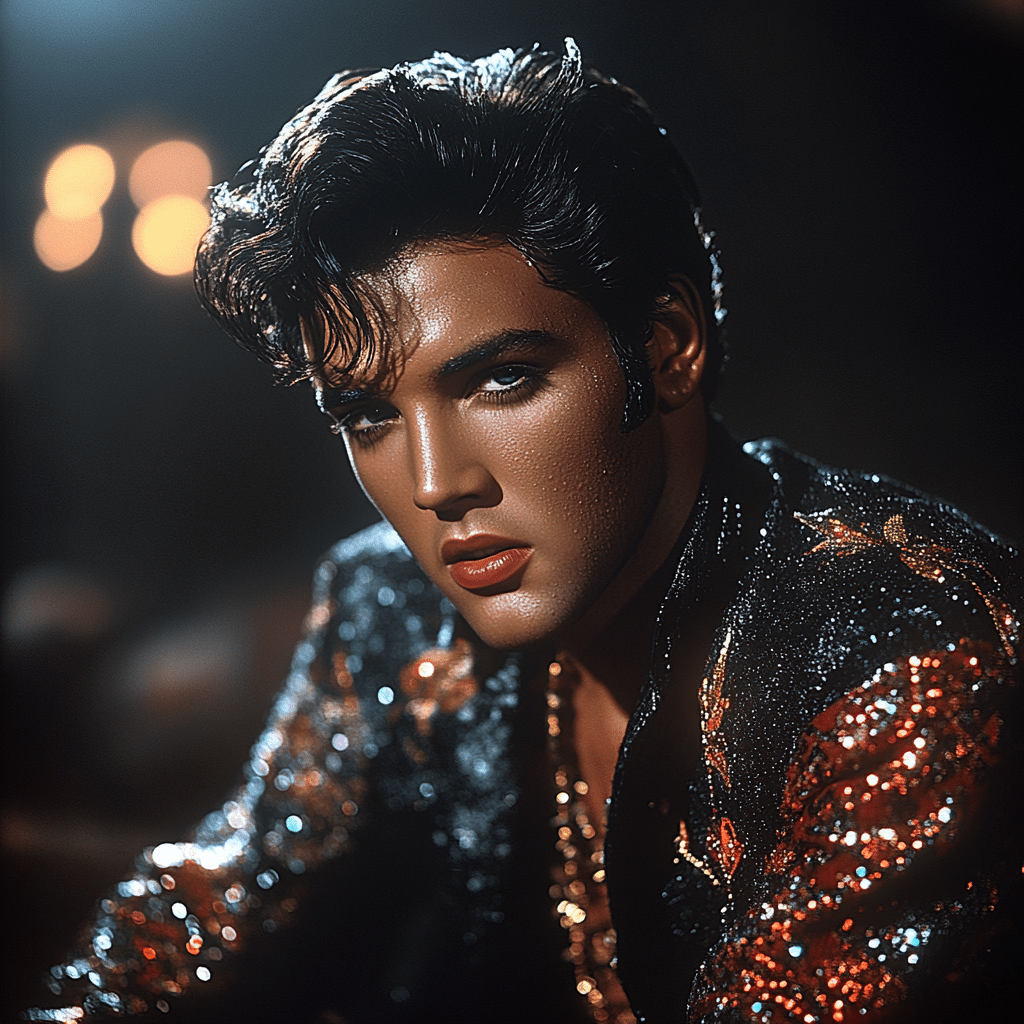Elvis Presley isn’t just a name; he’s a legacy. To answer the question of when was Elvis popular, one must navigate through the vibrant landscape of mid-20th century America. When he burst onto the music scene, his impact was immediate and profound, redefining the country’s cultural fabric. The fusion of country, blues, and rock ‘n’ roll that characterized his music made him a voice for a generation. By 1956, with chart-toppers like “Heartbreak Hotel,” Elvis was no longer just a rising star. He was an international sensation, ushering in the golden age of rock and roll and creating a platform for artists of all backgrounds, such as the trailblazing Black rock musicians who followed in his footsteps.
His television debuts brought millions of viewers into his orbit, making him one of the most recognizable faces in America. The question of when was Elvis popular becomes a tale woven into the very fabric of pop culture—a narrative with remarkable turns, incredible highs, and lasting influences across generations.
1. The Initial Surge: The Mid-1950s
Elvis’s journey began at Sun Records in Memphis, where he recorded his first single in 1954. His distinctive style and dynamic presence captured the attention of producers and fans alike. By the beginning of 1956, with “Heartbreak Hotel” lighting up the charts, he reached an incredible high, becoming a household name.
The music of the 1950s was transforming, and Elvis led the way. With his unique blend of rhythms and soulful vocals, he carved out a new genre that delighted listeners across racial lines. Elvis’s bold persona, characterized by his flashy clothing and hip-shaking dance moves, captivated a youthful audience hungry for rebellion and self-expression, making him a defining figure of a post-war America.

2. The Iconic Year: 1956
There’s no denying that 1956 was the year Elvis exploded onto the scene. With three No. 1 hits in one year, including “Hound Dog” and “Don’t Be Cruel,” his dominance was undeniable. His appearances on “The Ed Sullivan Show” in the winter of 1956 attracted an astounding average audience of around 60 million viewers—over half of the nation’s population at the time! It was during these televised performances that Elvis transitioned from a rising star to a cultural phenomenon.
Elvis’s impact went beyond music; it was evident in the rise of merchandise featuring his likeness, magazine covers showering him with attention, and the establishment of fan clubs dedicated to celebrating his music. The summer of 1956 saw the release of his first movie, “Love Me Tender,” further cementing his cultural relevance and showcasing his abilities beyond the recording studio.
3. The Movie Star Phase: Late 1950s
By the late 1950s, Elvis was captivating audiences on both the radio and the silver screen. His foray into Hollywood began to pay off with films like “Jailhouse Rock” (1957), which became one of the highest-grossing films of the year. In “Love Me Tender,” he debuted as a powerful screen presence. Collaborating with industry greats, including director Michael Curtiz and actress Judy Tyler, Elvis proved he could enthrall viewers much like he did music lovers.
Elvis’s cinematic ventures displayed his versatility not just as a performer but as a marketable icon. The combination of rock ‘n’ roll hits with the big-screen glamour elevated him to an entirely new level. This era saw him becoming a major box office draw, solidifying his position as a multi-talented entertainer capable of dazzling audiences nationwide.

4. The Army and After: 1958-1960
In 1958, as Elvis was drafted into the U.S. Army, many speculated whether this would be the end of his reign. To the surprise of many, this experience only enhanced his mystique and marked a new chapter in his career. The soldier image added a layer of depth to his public persona as he maintained his popularity through music releases during and after his service.
Elvis’s ability to remain relevant during his military stint was evident with songs like “Can’t Help Falling in Love” from his post-service film “Blue Hawaii” (1961). This time also showcased a patriotic side of Elvis, mirroring a nation proud of its servicemen. The combination of military service and continued music success bolstered his fan appeal and reaffirmed that Elvis was here to stay.
5. The Comeback: 1968 Television Special
Fast forward to the late 1960s—Elvis found himself facing industry changes as musical tastes shifted toward the British Invasion and the counterculture movement. However, the 1968 television special changed the game. Dubbed the “Comeback Special,” this show offered an unfiltered glimpse into Elvis’s passion for music and stage presence, reminding audiences of the artistry that made him a star in the first place.
With raw performances and a focus on his earlier hits, Elvis introduced newer songs, like “If I Can Dream,” showcasing his ability to evolve artistically. The special not only let fans relive his glory days; it proved that he was more than a fad.
6. The Vegas Era: 1969-1977
Elvis’s return to the spotlight began in Las Vegas in 1969, where he performed nightly at the International Hotel. His showmanship embraced the glitzy atmosphere of Sin City, and he captivated audiences with combined rock, gospel, and blues influences. This new era allowed Elvis to showcase his musical roots while embracing the theatrical, turning him into a staple of the Las Vegas entertainment scene.
His performances were a mix of nostalgia and innovation, from his extravagant costumes to his charismatic stage presence, reminding fans why he was originally called the “King of Rock and Roll.” This period solidified his legacy, showcasing an artist who remained relevant even as music preferences continued to evolve. Despite the fierce competition from emerging artists, Elvis stood tall, unyielding in his command over the crowd.
7. Enduring Legacy: Posthumous Popularity
Even after his passing in 1977, Elvis’s cultural imprint persisted. The birth of digital platforms—Spotify, YouTube, and streaming services—allowed new generations to discover and connect with his music. Elvis was more than a star; he was an inspiration, influencing artists like Bruno Mars and Shawn Mendes, who celebrate his creativity and unique style in their own work.
Documentaries, biopics, and various events honoring his life and career keep his memory alive. His influence across genres transcends generations, ensuring that the question of when was Elvis popular remains relevant even today, bridging the gap between past and future music enthusiasts.
Elvis Presley’s rise to fame exemplifies more than mere dates on a timeline. It’s a reflection of a powerful cultural shift where music and identity intertwined, creating a legacy that’s still thrilling fans and shaping artists today. From his initial surge in the mid-1950s to his enduring legacy in present times, Elvis remains a signature figure of American pop culture, a bridge between generations united by the rhythmic beats and heartfelt lyrics of an era that changed everything.
When Was Elvis Popular?
The Rise of the King
Elvis Presley’s rise to fame took off in the mid-1950s, a time when rock ‘n’ roll was sweeping the nation. He blended various genres like pop, blues, and country, creating a sound that resonated widely. Interestingly, his first single, “Heartbreak Hotel,” released in January 1956, became an instant hit, reaching the top of the charts in no time. It’s fascinating to think about how many households were tuning in to hear him croon, all while the energy of the Nhl Stanley cup was building in the background, captivating sports fans across the country.
Cultural Impact
When Elvis was popular, he did more than just make music; he became a cultural icon. His slick hairstyle and flashy outfits set the trends of the era, influencing everything from fashion to film. The same year he starred in his first movie, “Love Me Tender,” he was also helping ignite youth culture, much like the excitement surrounding the Jokic Nuggets as they made headlines in the NBA. It’s incredible how both sports and music can shape a generation’s identity!
Fun Facts About His Popularity
Did you know that during his peak years, Elvis had more hits in the Billboard Top 40 than any other artist? His albums flew off the shelves, and he even had a knack for making comebacks, like when he returned with the iconic “68 Comeback Special” after a brief hiatus. Flighty as a feather, sometimes it feels like the popularity of artists can be as perplexing as guessing what my cousin’s kid is to me. Just when you think you have it figured out, another twist comes along. The King, with his innovative style, truly defined an era that was as vibrant as the sets where they filmed “Where Was Saint X?”
So there you have it; the timeline of when Elvis was popular isn’t just filled with concerts and records but is bursting with cultural significance and delightful surprises. Each moment of his career reflects an evolving landscape of entertainment.

When was Elvis at his peak?
Elvis was at his peak in the late 1950s, dominating the pop music charts and becoming a cultural icon during that time.
What year did Elvis get popular?
Elvis really got popular in 1956 when he became an international sensation, thanks to his hits and performances.
What age did Elvis first perform?
Elvis first performed live at age 19 on July 30, 1954, at the Overton Park Shell in Memphis.
What year did Elvis all shook up?
“All Shook Up,” one of Elvis’ famous songs, was released in 1957 and became a huge hit.
Who is the king of rock?
Elvis is often referred to as the “King of Rock and Roll” because of his immense impact on the genre and music as a whole.
Was Lisa Marie at Elvis’ funeral?
Yes, Lisa Marie was at Elvis’ funeral, which took place in 1977, a day that marked a significant loss for many fans.
Was Elvis popular in the 50s or 60s?
Elvis was widely popular in both the 50s and 60s, with his fame only growing in the latter decade as he released many hits and starred in blockbuster movies.
How many #1 hit songs did Elvis have?
Elvis had 18 #1 hit songs on the Billboard charts throughout his career, making him one of the best-selling solo artists.
What was Elvis’ real hair color?
Elvis’ natural hair color was dark brown, though he famously dyed it black for his performances and public image.
What ethnicity was Elvis?
Elvis was of a mixed ethnicity, primarily of Anglo-American descent with some Cherokee Native American heritage.
What did Elvis call his mom?
Elvis lovingly referred to his mom as “Gladys,” and he had a close relationship with her throughout his life.
Was Lisa Marie at Elvis’ funeral?
Lisa Marie attended Elvis’ funeral, reflecting the deep connection she had with her father.
What did Elvis call his mom?
Elvis called his mom “Glady,” a term of endearment that showed their special bond.
What was the age difference between Elvis and Per?
There was a significant age difference between Elvis and Priscilla Presley; he was 10 years older than her.
How old was Elvis in the 70?
Elvis was 42 years old when he passed away in 1977, an age that came too soon for many of his fans.



